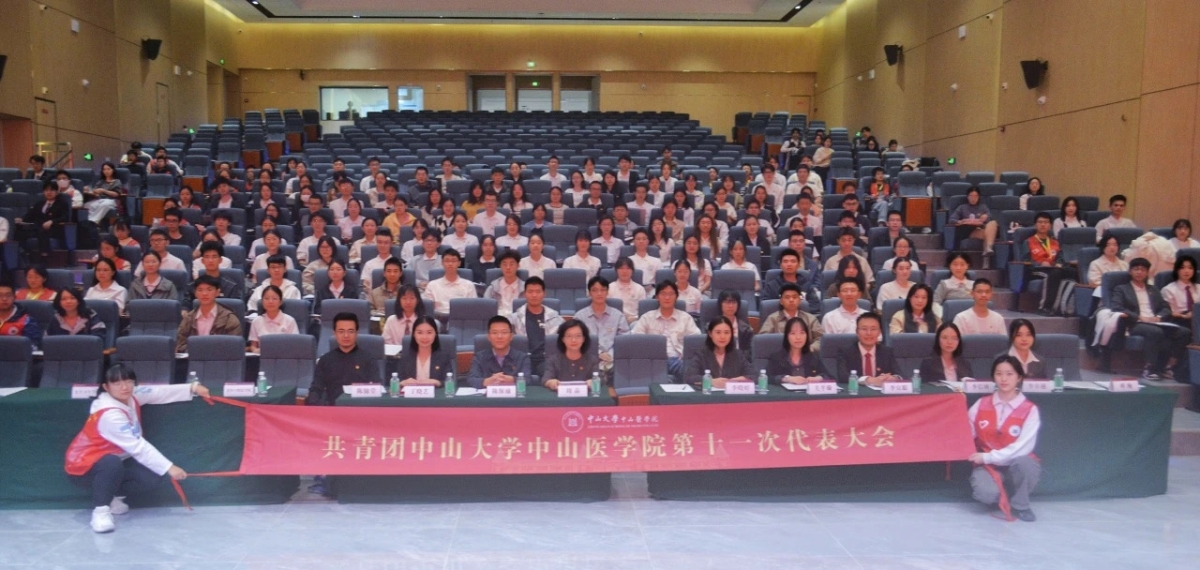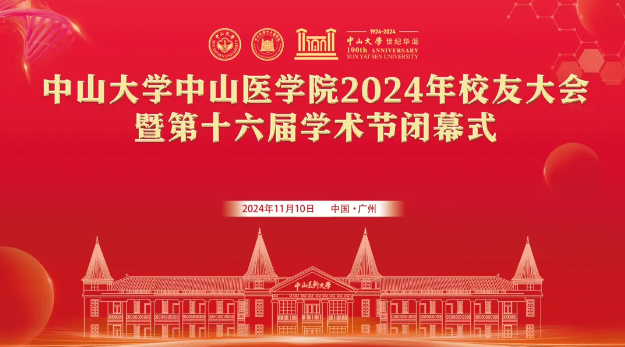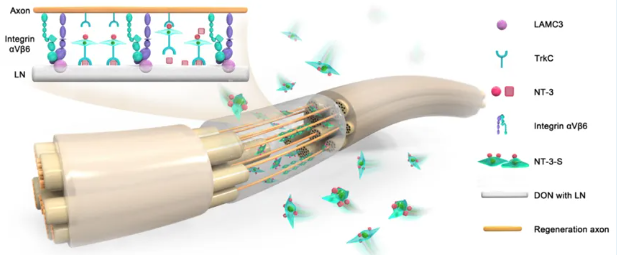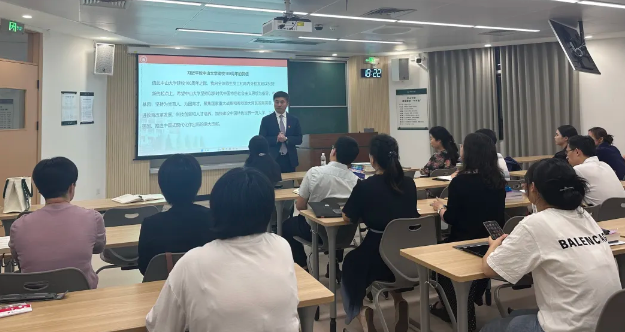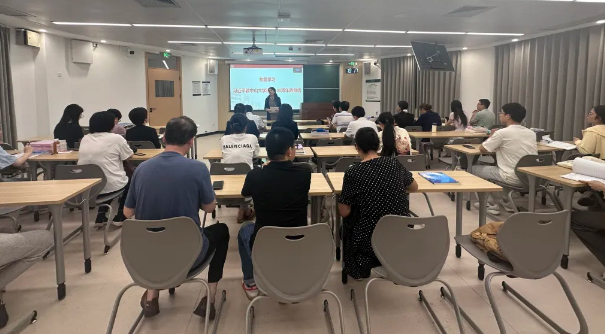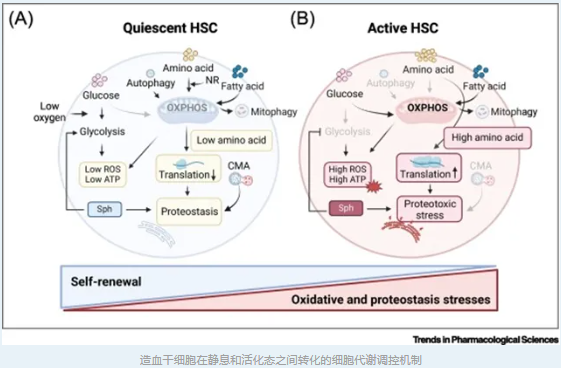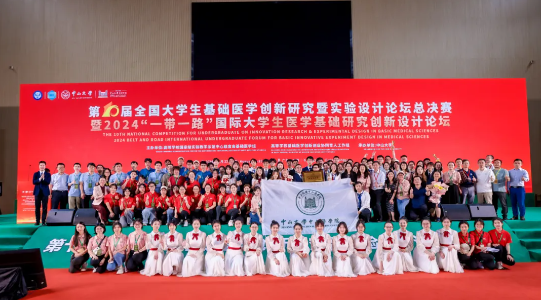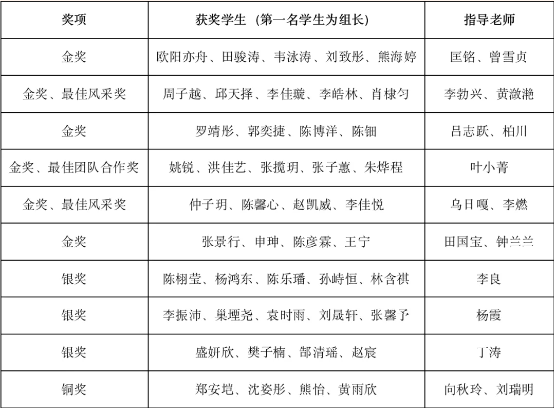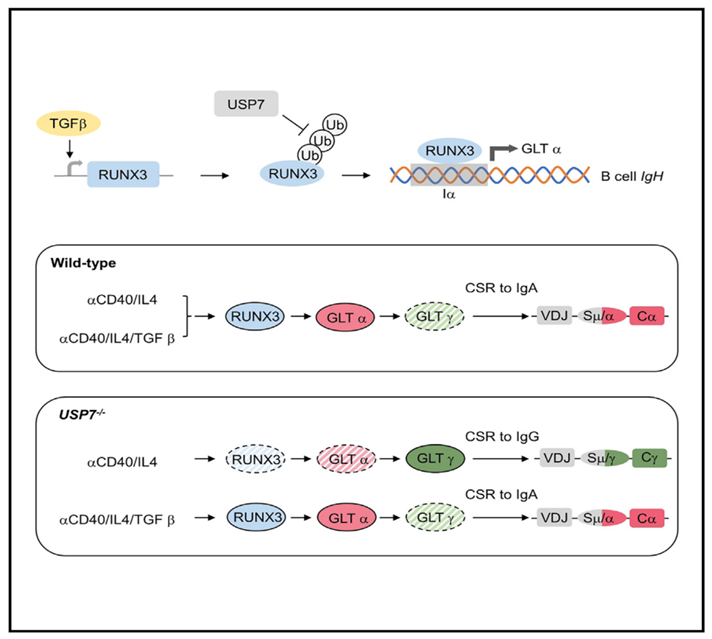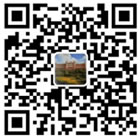Remain True to Our Original Aspiration, Follow the Communist Party of China, Shoulder Responsibilities Bravely and Make New Achievements | The 11th Congress of League Members of Sun Yat-sen School of Medicine, Sun Yat-sen University Was Successfully Held
On the afternoon of November 30, the 11th Congress of League Members of the Communist Youth League of Sun Yat-sen School of Medicine, Sun Yat-sen University was officially held in the Alumni Hall on the North Campus. Zhou Jing, Deputy Secretary of the Communist Youth League Committee of Sun Yat-sen University, Chen Baoyu, Deputy Secretary of the Party Committee of Sun Yat-sen School of Medicine, Ding Xiaoyi, Secretary of the Communist Youth League Committee of Sun Yat-sen School of Medicine, Ji Xiaoting, Deputy Secretary of the Communist Youth League Committee, Chen Jintang, Counselor of the 2024 grade, and Guan Qianxuan, Secretary of the Alumni Center, attended this meeting. League member representatives from all grades participated in this meeting.
First of all, the preparatory meeting of the 11th Congress of League Members of the Communist Youth League of Sun Yat-sen School of Medicine, Sun Yat-sen University was held.
The preparatory meeting listened to and voted on the "Report on the Qualification Examination of Representatives of the 11th Congress of League Members of the Communist Youth League of Sun Yat-sen School of Medicine, Sun Yat-sen University (Draft)"; the "Agenda of the 11th Congress of League Members of the Communist Youth League of Sun Yat-sen School of Medicine, Sun Yat-sen University (Draft)"; the "Election Measures for Members of the 11th Committee of the Communist Youth League of Sun Yat-sen School of Medicine, Sun Yat-sen University (Draft)"; and the "List of Chief Scrutineers and Tellers for the Election of the 11th Committee of the Communist Youth League of Sun Yat-sen School of Medicine, Sun Yat-sen University (Draft)". The convening of the preparatory meeting laid a solid foundation for the smooth progress of the formal meeting. The 11th Congress of League Members of Sun Yat-sen School of Medicine, Sun Yat-sen University opened. All participants stood up and sang the "National Anthem of the People's Republic of China" and the "Anthem of the Communist Youth League" together.
Zhou Jing, Deputy Secretary of the Communist Youth League Committee of the university, extended warm congratulations on the successful convening of the 11th Congress of League Members of Sun Yat-sen School of Medicine. She fully affirmed the hard work and outstanding achievements of teachers and students of all grades in the past three years. Meanwhile, on behalf of the Communist Youth League Committee of the university, Deputy Secretary Zhou Jing put forward three expectations for the work of the Communist Youth League of Sun Yat-sen School of Medicine: First, listen to the Party, follow the Party, and effectively enhance the political nature of the Communist Youth League. Second, inspire the vast number of league members and young people to strive for excellence, show the features of the times, and effectively enhance the advanced nature of the Communist Youth League. Third, give full play to the role of a bridge and bond connecting the Party and young people, serve the growth and development of young people, and effectively enhance the mass nature of the Communist Youth League.
At the meeting, all league member representatives listened to, deliberated on and voted on the "Work Report of the 10th Committee of the Communist Youth League of Sun Yat-sen School of Medicine, Sun Yat-sen University (Draft)". The report systematically reviewed the work of the Communist Youth League of the school since the 10th Congress of the Communist Youth League of Sun Yat-sen School of Medicine from four aspects: strengthening political guidance, continuously deepening reforms, expanding volunteer services, and focusing on the second classroom. The report believed that the Communist Youth League Committee of Sun Yat-sen School of Medicine had always put ideological guidance first, carried out theoretical learning in a down-to-earth manner, combined theory with practice, built learning platforms, adhered to deepening the reform of the league organization, strictly implemented the system of "Three Meetings, Two Systems and One Lesson", actively participated in the construction of Chinese-style modernization, adhered to the "simultaneous development of five aspects of education", focused on the second classroom, and continuously standardized and institutionalized the work of the league committee. The report also pointed out that there were still deficiencies in strengthening the integrated construction of the Party, the league and classes, further improving the contribution to the overall situation, and further deepening the organizational reform in our school. The league committee of the school will improve the work in a targeted manner, innovate the working mechanism, consolidate the organizational foundation, lead, unite and serve young students, and contribute youthful strength to promoting the development of youth undertakings and the comprehensive construction of the school.
The candidates for members of the 11th Committee of the Communist Youth League of Sun Yat-sen School of Medicine, Sun Yat-sen University made personal statements. In their statements, the candidates elaborated on their election platforms, reviewed their experiences in league affairs, put forward work ideas, and expressed their enthusiasm for serving youth affairs and playing an exemplary role.
Chen Baoyu, Deputy Secretary of the Party Committee of Sun Yat-sen School of Medicine, gave a special league class titled "Making Good Use of the 'Four Addition and Subtraction' Toolkit to Promote the Inheritance and Innovation of the Work of the Communist Youth League". He described the four additions and subtractions in the work of the league and student affairs of Sun Yat-sen School of Medicine: do "addition" in terms of political height and do "subtraction" in terms of working alone; do "addition" in terms of work depth and do "subtraction" in terms of treating people differently; do "addition" in terms of professional concentration and do "subtraction" in terms of shirking responsibilities; do "addition" in terms of the degree of closed loop and do "subtraction" in terms of weaknesses. Correct the style through learning and promote work through learning. Combine strict management with kind care. Pay attention to both quality and quantity. Have inheritance and also be able to develop. Promote the vast number of league members to jointly build, manage and make decisions on relevant league affairs and jointly create a harmonious and beautiful campus environment. Encourage league members and young people to be strivers in the new era, witnesses of the glorious history, leaders of the beautiful future, and guardians of "Healthy China". Integrate the individual into the collective, run hard on the track of youth, and strive to become builders and successors of socialism.
In accordance with the election measures and procedures of the congress, a total of 15 members of the 11th Committee of the Communist Youth League of Sun Yat-sen School of Medicine, Sun Yat-sen University were elected through the vote of all participants. Deputy Secretary Chen Baoyu announced the list of members, who are (in the order of the number of strokes of their surnames): Ding Xiaoyi, Tian Juntao, Guan Qianxuan, Li Yangfan, Li Xinyan, Wu Jiajia, Zhang Junhao, Zhang Jingxing, Chen Jieyi, Chen Jintang, Tie Hangyu, Luo Xiaoyi, Ji Xiaoting, Kang Jiaqi, Cheng Siyang.
This congress of the Communist Youth League of Sun Yat-sen School of Medicine, Sun Yat-sen University is an important meeting for league members to discuss league affairs together, gather youthful strength, show their responsibilities and promote the vigorous development of the cause of the Communist Youth League. Through this meeting, each league member representative can convey the voices of league members in a serious, responsible, comprehensive and detailed manner, and actively offer suggestions for the construction of the league organization. The league organization can optimize decisions, build a better growth platform for league members, help league members strengthen their sense of responsibility, enhance their enthusiasm for participating in league affairs, promote the close connection between the league organization and league members, deepen mutual trust, create an energetic atmosphere for the construction of the league committee, and demonstrate the spirit and mission of the Communist Youth League of Sun Yat-sen School of Medicine of striving in unity and pursuing excellence.
Keep moving forward and the future will surely be achieved. The league committee of the school will continue to move forward bravely, shoulder the mission of the times, closely follow the pulse of development, gather the strength of young people in the whole school, and continue to strive hard to practice the school motto of Sun Yat-sen University, which is "erudite, inquisitive, reflective, discerning, and steadfast". Remain true to our original aspiration, follow the Communist Party of China, shoulder responsibilities bravely and make new achievements, and let youth shine more brightly in hard work and dedication.
